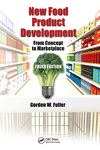
Gary Iles
Douglas J. Peckenpaugh: Have we recovered from the much-publicized supply-chain issues from the past few years?
Gary Iles: Not even close. The supply chain barely had a chance to bounce back when Russia invaded Ukraine, which derailed any chance of a quick recovery. The global supply chain is a tightly coupled machine designed to deliver goods “just in time.” While that strategy helps save money on storage costs, any disruption to that delicate system creates a domino effect that short-circuits everything. The most optimistic estimates suggest we’ll be looking at another six to 12 months of supply chain shortages. But it could easily take twice that long, especially if manufacturers fail to take a more proactive approach to diversify their pool of suppliers.
DJP: How is the war in Ukraine impacting grain supply in Europe?
GI: Things have stabilized somewhat, but the invasion has pushed European wheat prices to record highs.
But it’s not just Europe. Keep in mind that Russia and Ukraine make up about a third of the global wheat supply. The United Nations reports that about 4.5 million tons of wheat are sitting idle in Ukraine, awaiting shipment. And any of those exports that manage to make it through blockaded ports or sanctions face prohibitive insurance rates—with premiums up 400% in some cases. Worse than that, the farmers who should be planting the next round of crops are on the battlefield instead. The longer this conflict drags on, the longer any recovery will take.
DJP: Even if bakery companies in the U.S. do not source grain from Ukraine or Russia, will the current supply-chain complications in Europe impact American bakery companies?
GI: The short answer is yes. Both bakers and cereal makers will face higher prices as the grain shortage reverberates throughout the market. We can reasonably assume manufacturers will pass those costs along to consumers.
DJP: How can bakery companies protect themselves from periodic ingredient shortages?
GI: The best defense bakers can employ is to build a diverse supplier base. Relying on a limited number of ingredients suppliers is a risky strategy even under the best of market conditions. But when disaster strikes—in this case, from many angles—it can cripple a manufacturer and grind production to a halt. So creating agility and resilience around ingredients and sourcing is critical.









